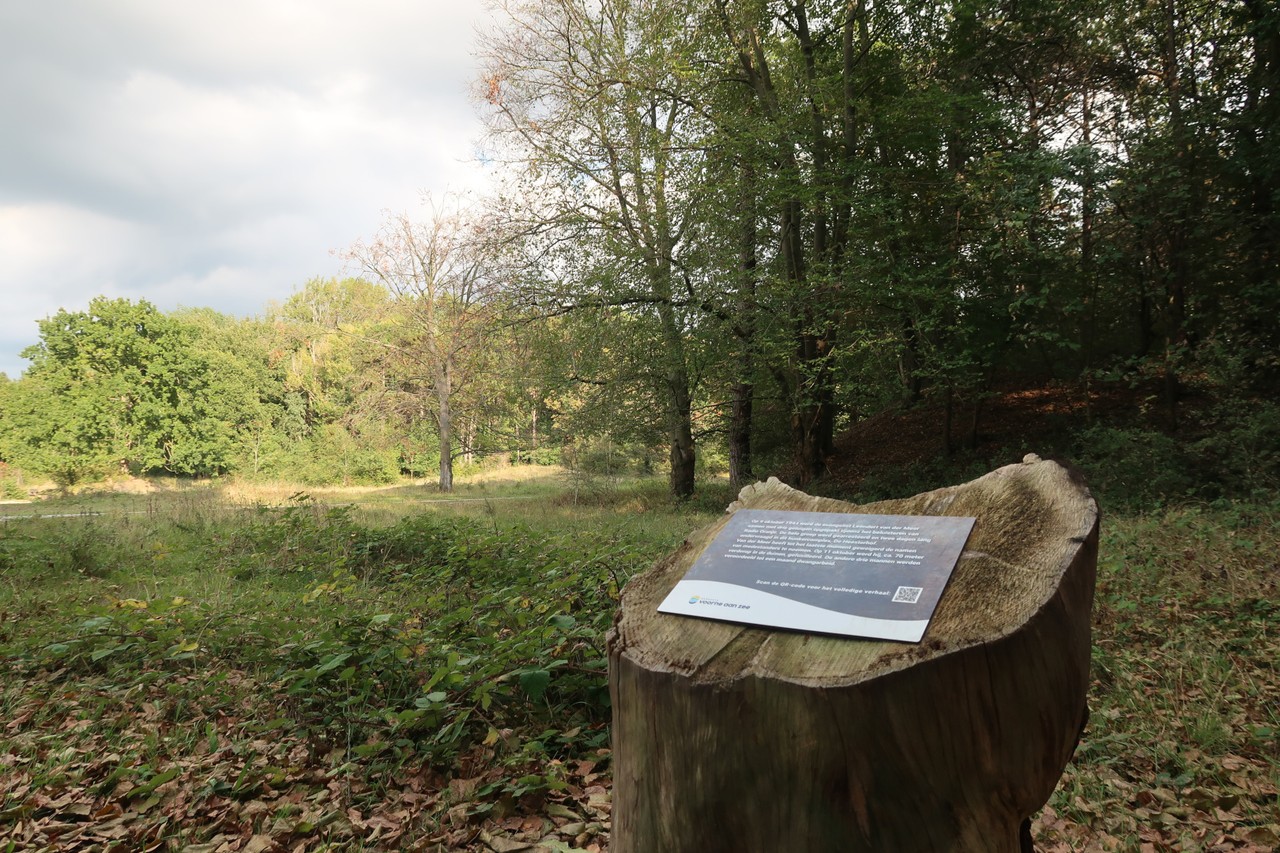The complex was commonly called Heesterhof because of the shrubs that grew here at the time. The site has a loaded history because evangelist Leendert van der Meer was executed here. Two weeks before his execution, he helped a number of striking railway workers find hiding places. Van der Meer was known among the population for inviting people to listen to illegal radio broadcasts at his place. If the Germans discovered a forbidden radio, the person involved could expect a week of detention at best, but in Voorne in the autumn of 1944 the consequences were far harsher.
After the Allied invasion on the beaches of Normandy (D-Day, June 6), the Allies quickly advanced and reached Zeeland and Brabant. With the front approaching, the Germans were tense, and a grim atmosphere prevailed. Any suspected resistance had to be suppressed. After discovering several radios elsewhere on Voorne, the Germans threatened to execute one in ten adult men. When the local commander was informed that illegal listening to Radio Oranje was taking place in the evangelization building in Oostvoorne, they acted during the broadcast on October 9, 1944.
Van der Meer and a few friends were unsuspectingly listening to the radio when the doorbell startled them. They quickly hid the device, but the searching soldiers found another radio under the pulpit, which, despite the thick layer of dust, was enough reason to arrest everyone. They were taken to Heesterhof and imprisoned in a bunker.
During the interrogation by the Sicherheitsdienst two days later, Leendert van der Meer allegedly admitted to being a member of an illegal organization. He refused to give any names and stated that his visitors were outside. They were released after a short labor sentence, but he received no mercy. In their presence, he was executed by firing squad the same day. His evangelization building was burned down as a warning to the population, and Mrs. Van der Meer was banished from the island. Along the Sipkesslag, a plaque with a QR code provides more information in memory of this tragic event.
After the war, the bunkers were an eyesore to many people because they reminded them of a terrible time. The concrete lumps in the landscape had to be removed or hidden as much as possible. Conservationist Cees Sipkes planted Austrian pines to mask the bunkers. The trees have shallow roots and are therefore suitable for holding the shifting dune sand over the bunkers.
